Getting started
This is a quick tour around Fleet that shows how to do basic things to get you started. All you need to follow along is install Fleet on your computer.
You will learn how to start Fleet and do some basic personalization. Then you will use Fleet as a text editor and explore its text editing, search, and navigation features. Also, you will learn how to version your project files using Git.
Download and install Fleet
Download and install JetBrains Toolbox.
In JetBrains Toolbox, click Install near the JetBrains Fleet icon.
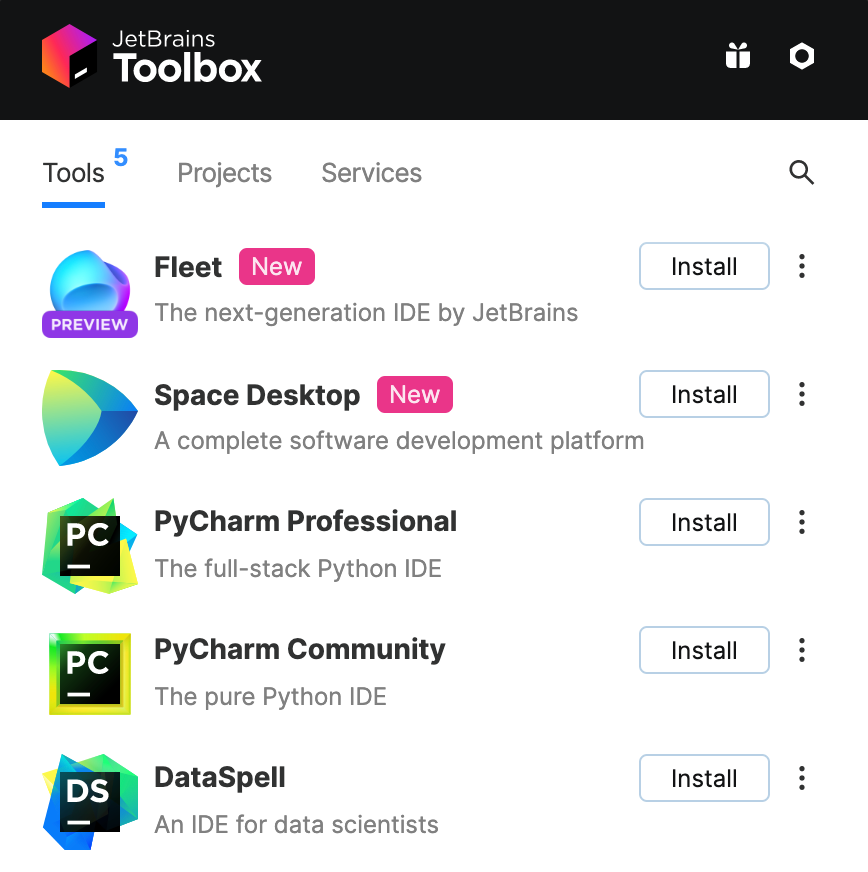
After you have installed JetBrains Fleet, you can start in from JetBrains Toolbox. You can also launch it from the command line.
Select color themes
You can customize Fleet appearance to your liking. Let's start with choosing the color theme.
Press ⌃ `. Alternatively, press ⌘ ⇧ K then type
Select color theme.
For more customizations, refer to Settings.
Tools and panels
All Fleet tools are organized in panels. Whenever you need to use a tool, for example, the terminal or debugger, you can open it in one of the panels.

Open a tool
Press ⌘ T or select from the main menu.
Type the name of the tool or pick one from the suggestion list.
Hide and show a tool panel
Use the buttons in the top-left corner of the window or press ⌘ 1, ⌘ 2, or ⌘ 3 for the left, bottom, or right panel respectively.
Work with files and folders
In JetBrains Fleet, there is no requirement to have projects for all your code. Instead, you can work with any folder and individual files as you would normally do in most text editors.
Open a folder
From the workspaces menu, select Open in New Workspace.

Select a directory.
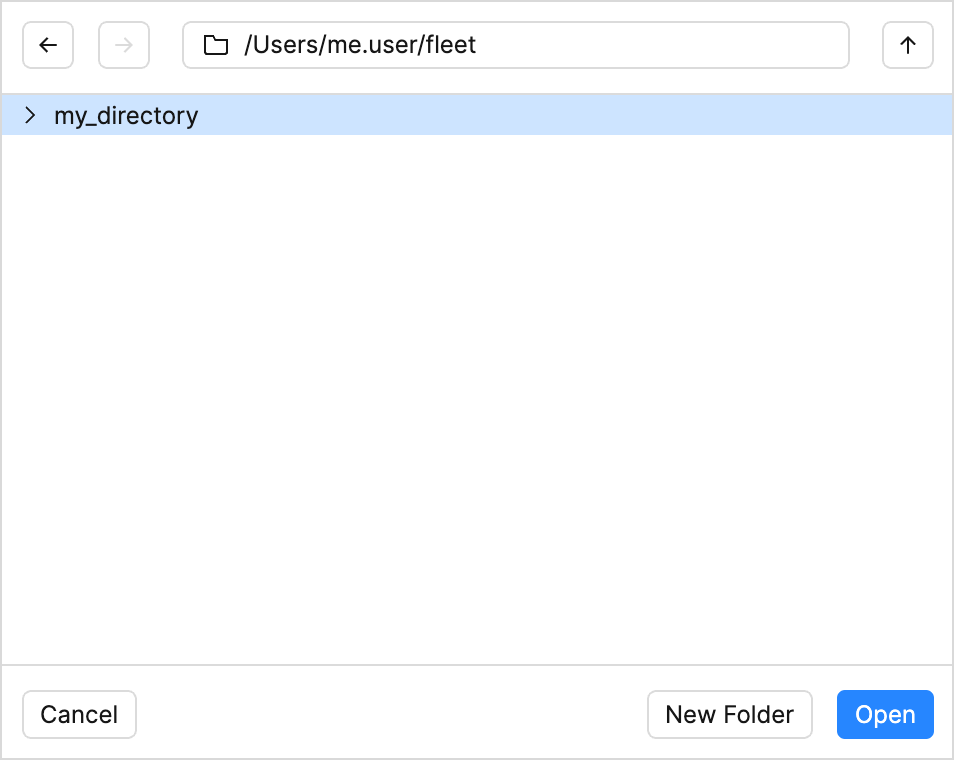
When you open a directory, it becomes the root of a workspace. You can view its contents in the Files view.

Create a file
Select a directory in the Files view and press⌘ N. Alternatively, right-click the directory and select New file.
Give the file a name and an extension.

Edit text
At its core, Fleet is a lightweight text editor, well suited for viewing and editing individual text files. Let's look at some of the Fleet editor features:
Split view
It is sometimes convenient to work in several tabs side-by-side. To do that, drag a tab to an editor side (for vertical split) or to editor top or bottom (for horizontal split).
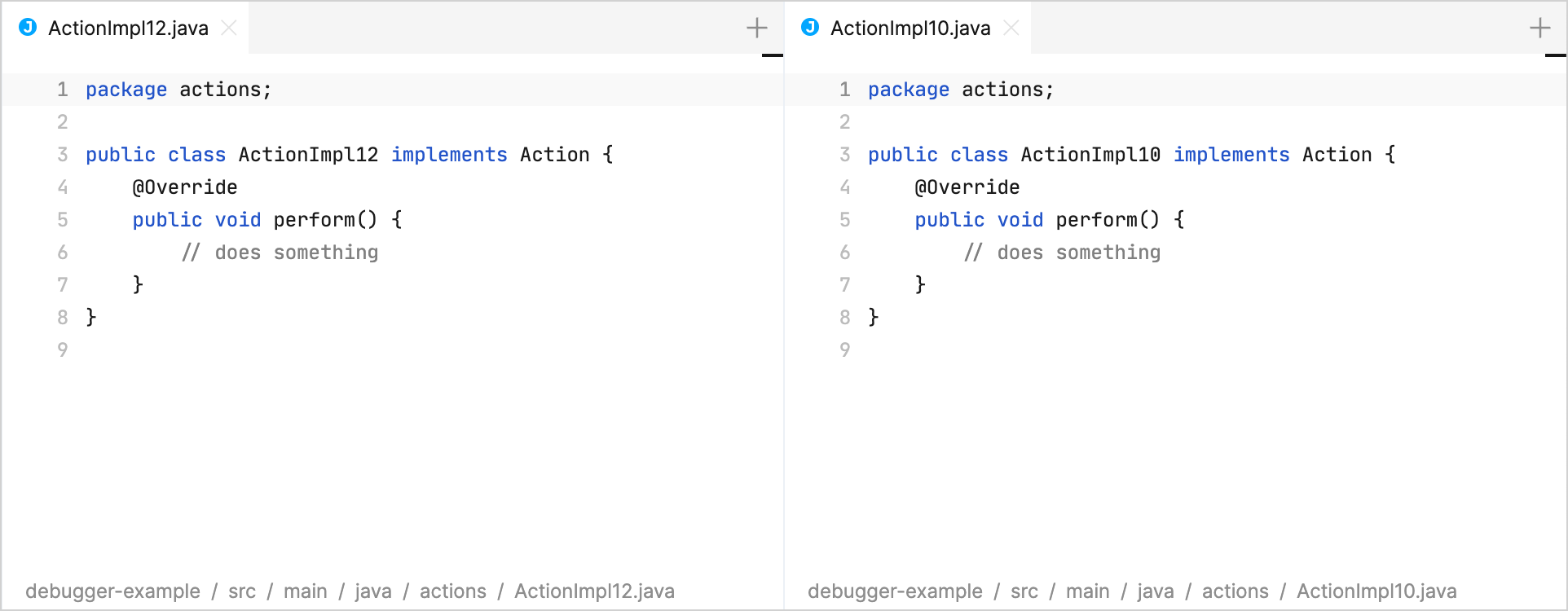
Multiple carets
You can make changes to your text in several places simultaneously using additional carets. To create additional carets, do one of the following:
Press ⌘ ⌥ ↑ or ⌘ ⌥ ↓ to respectively add carets above or below the current one.
Hold Alt+Shift and click the places where you want to add carets
Position the caret at the repeated word or text range, then press ⌘ ⇧ L. Carets will be added to all occurrences of the repeated word within the file.
With multiple carets, you are not limited to typing: you can copy, paste, auto-complete words, and so on.
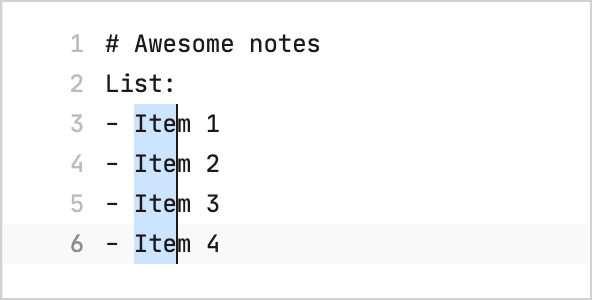
Expand and shrink selection
You can expand and shrink selection at caret based on text or code structure.
Use ⌥ ⇧ ↑ to select the outer scope (expand selection) or ⌥ ⇧ ↓ to select the inner scope (shrink selection).
Search
Whenever you want to perform a full-text search, navigate to a class, or just don't remember how to do something in Fleet, the Go to dialog is the right tool.
Press ⌘ K and select the required tab with ⌃ ⇥.

Version control
You can commit and manage your Git repository from Fleet.
Open the terminal ⌃ ⇧ ` and run the following commands:
git init echo "Hello" > greeting git add . git commit -m "first commit"This will initialize a Git repository in the workspace, create a text file, and add the entire workspace to version control. You can omit this step and use your own Git-enabled project instead.
Make some changes to the text file:

A blue circle appears in the Files view near this file, indicating there are uncommitted changes.
In the Files view, go to the Git tab, make sure that the change is selected, and click Commit.
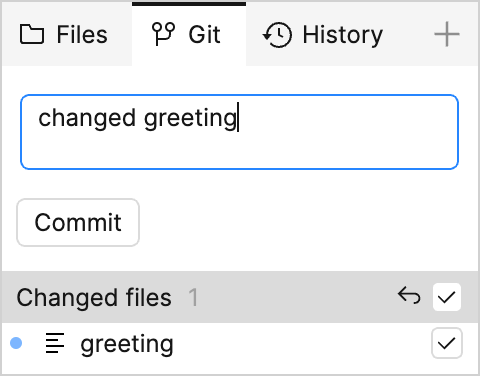
You can view commit details and diffs in the History tab:

Work with code
With the Smart Mode JetBrains Fleet turns into a polyglot IDE. For working with code, see the following tutorials covering the supported languages: